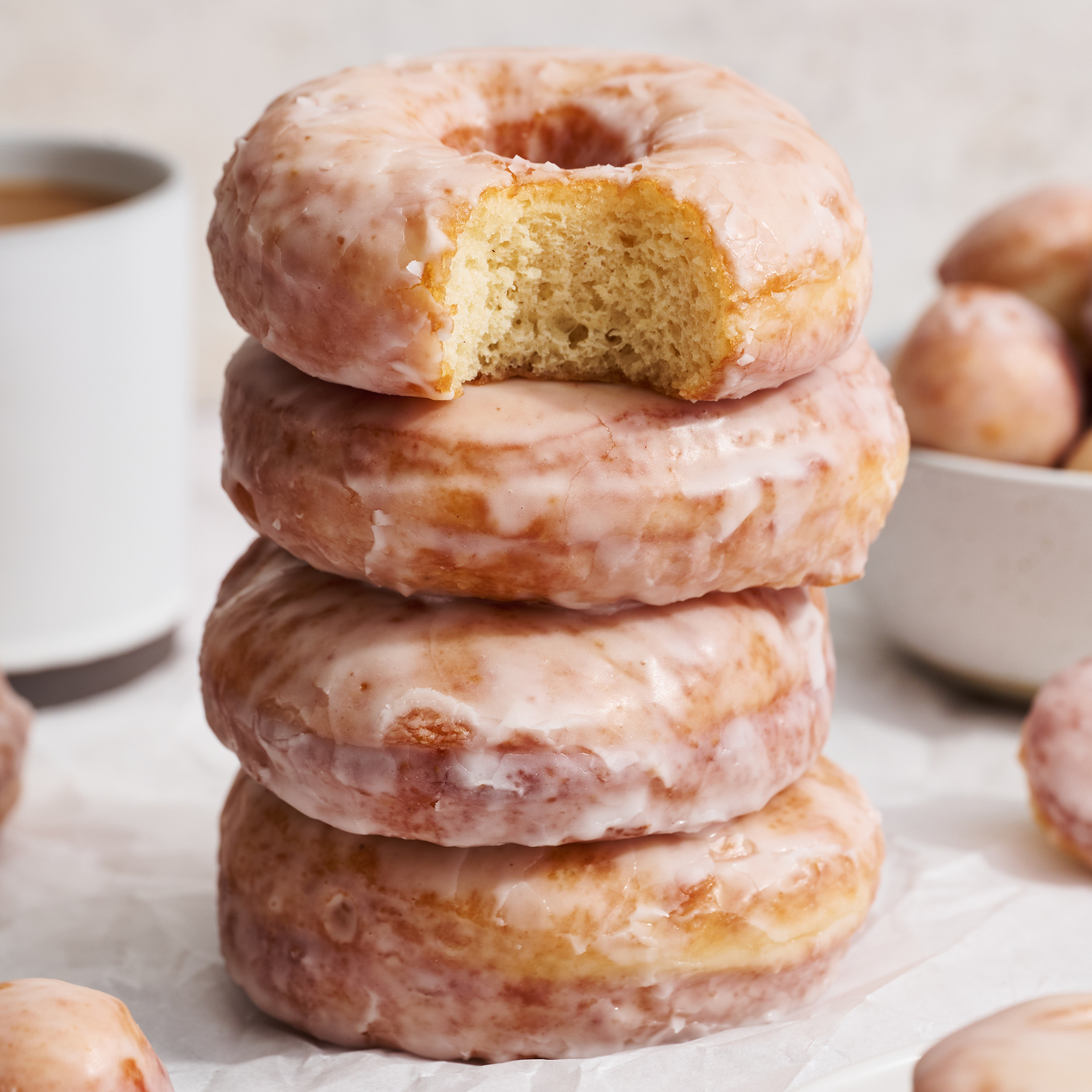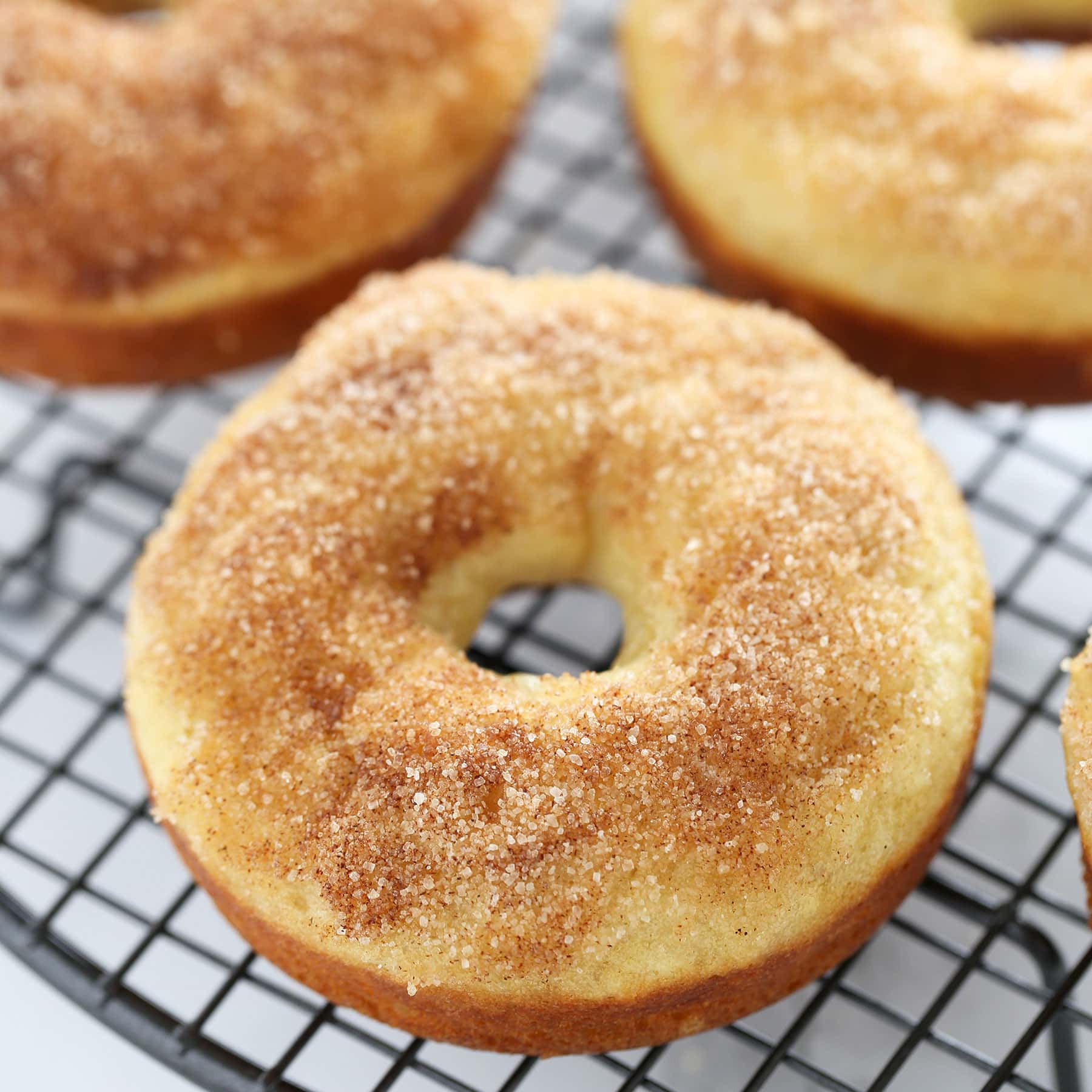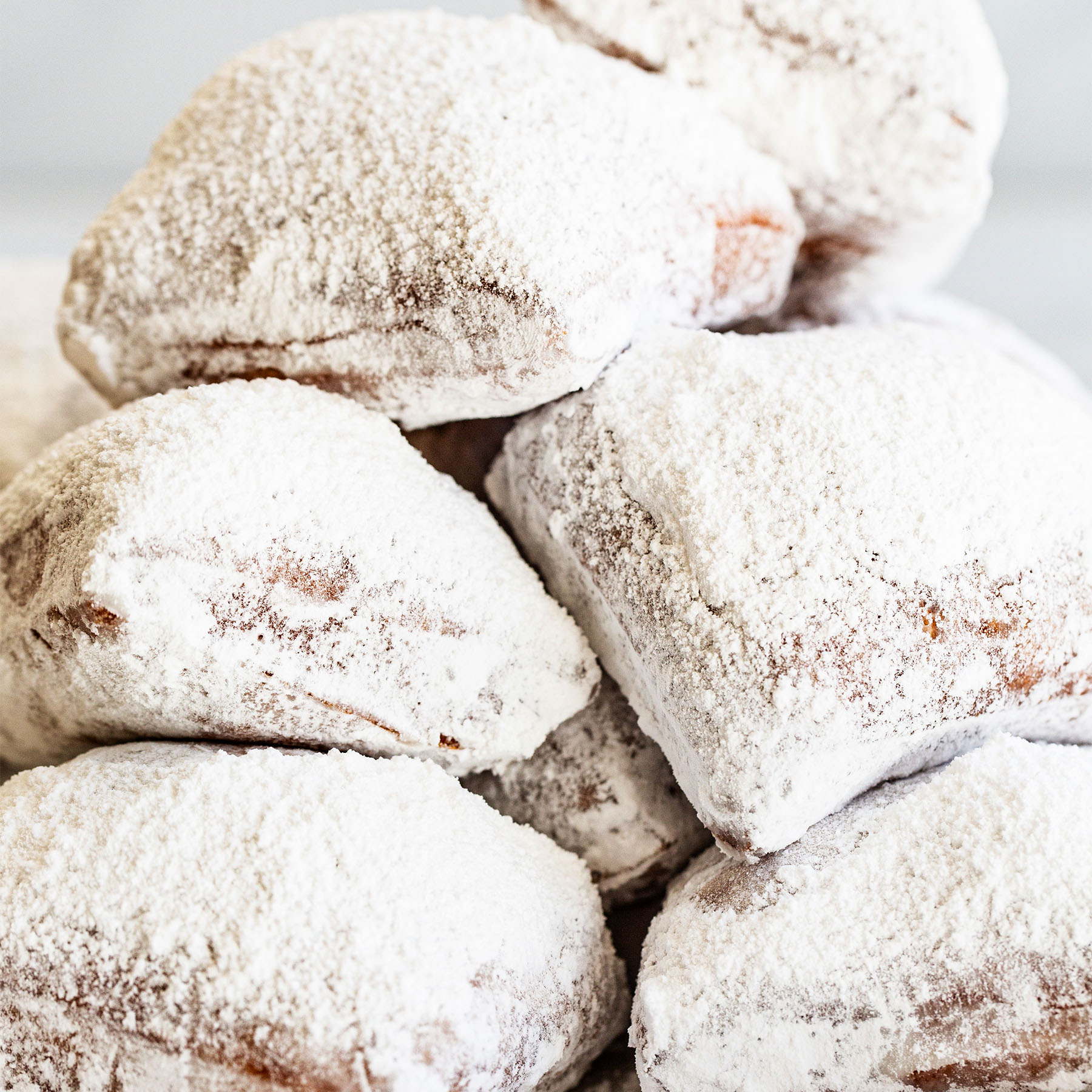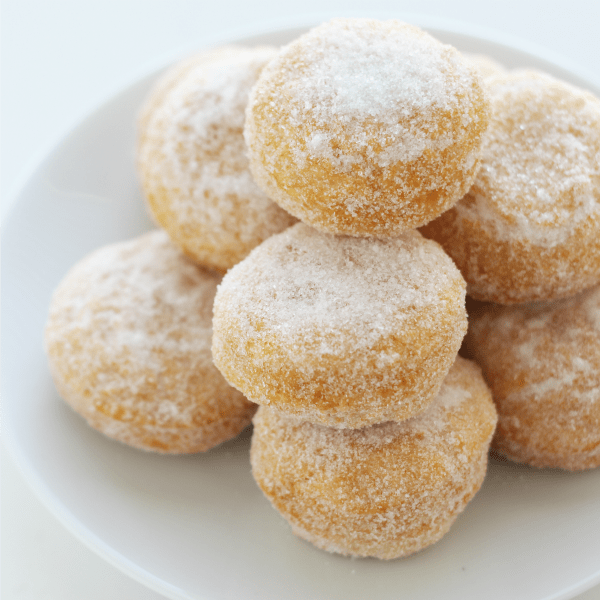Donut Recipes
Here is a collection of the very best Donut Recipes! Whether you’re looking for quick and easy Baked Doughnuts, you’re ready to break out your frying skills for the best Sour Cream Doughnuts or the delicious Glazed Doughnuts, your new favorite doughnut recipe is here.
Most Popular
Baked Doughnuts
Old-Fashioned Doughnuts
Filled Doughnuts
More Doughnut Recipes You’ll Love

How to Make Doughnuts
Become a homemade doughnut baking pro with these helpful how-to and science articles.
Tessa’s Top Baking Tips
1
Use a digital scale to weigh your ingredients
Using a scale is a smart idea for just about every recipe. Any issues I hear about doughnut dough being too dry or sticky are likely due to inaccurate measuring! If your doughnuts aren’t as fluffy and light as you’d like, it’s due to compacting too much flour into your measuring cup. You can learn more about how to measure flour the RIGHT way here.
2
Use real cake flour – not DIY cake flour!
Purchased cake flour will yield light and delicate doughnuts like the ones from the bakery. DIY substitutions don’t really cut it, and AP flour will not create doughnuts with that same soft texture. Also, bleached cake flour will work best. Unbleached (like King Arthur Baking) won’t absorb as much moisture, and you may end up with doughnuts that crumble while frying. You can learn more about cake flour here.
3
When frying doughnuts, use FRESH oil!
Oil goes rancid quickly, often before the date on the bottle. If your oil has any unpleasant smell, don’t use it. Your doughnuts won’t taste good.
I don’t personally own an air fryer but recently had a reader message me that she had success air-frying some of my doughnut recipes.
How to Make Doughnuts from Scratch
Step into my kitchen and bake these easy and delicious homemade doughnuts with me.
[adthrive-in-post-video-player video-id=”u05BSO6b” upload-date=”2021-10-07T17:22:47.000Z” name=”Old Fashioned Sour Cream Doughnuts” description=”Old-Fashioned Sour Cream Doughnuts are coated in glaze and taste just like the cakey ones at your favorite bakery! No yeast makes this recipe quicker and easier.” player-type=”default” override-embed=”default”]

Baking Science Mini-Course!
From cookies that spread to undercooked brownies, this *FREE* 5-day Baking Science course helps you conquer common baking challenges and make bakery-worthy treats every time.
All Donut Recipes

Frequently Asked Questions
What kind of yeast to use in doughnuts?
You can use active dry yeast in most doughnut recipes. If you don’t have or can’t find instant yeast, you can easily use active dry yeast instead. Simply combine it with the warm liquid called for in the recipe and allow it to proof for 5 minutes before adding into the bowl with the other ingredients.
Note that instant yeast is sometimes labeled as rapid rise or quick rise yeast. These types of yeast are specifically formulated to allow you to skip proofing (aka the step where you combine the yeast with warm liquid for 5 minutes). You can add instant yeast directly into the mix with all of the ingredients.
In this day and age, most yeast products are formulated to ensure your success in the kitchen. So unless you kill the yeast by exposing it to liquid that’s way too hot, you should be just fine. The dough may just take longer to rise.
What’s the difference between a doughnut and a beignet?
They’re very similar with just a few stylistic differences. Most simply, beignets are shaped into squares instead of donut shapes, and they’re coated in powdered sugar instead of a glaze.
You’ll see my beignet recipe uses evaporated milk instead of whole milk (classic to most doughnut recipes) to yield an extra fluffy and tender texture. It also uses bread flour which has a higher protein content and therefore will develop a stronger network of gluten when the dough is kneaded. This helps create those big puffy squares so each bite is extra fluffy inside.
Why is my doughnut dough sticky?
A “rich” dough has cream and egg yolks added in. This means it can take longer for the dough to knead and will still be quite sticky before its first rise. Not to worry, the dough will lose much of that stickiness as it rises. It’s better to deal with some stickiness than to add too much additional flour and ended up with dense doughnuts. Rich doughs can also take longer to rise, so be sure to give yourself plenty of time!
How to make doughnuts ahead of time:
Doughnut dough can be made and allowed to rise slowly overnight in the fridge if you need to make them ahead of time. Let the dough come to room temperature as you heat your oil (if frying).
How to store doughnuts:
Doughnuts are best enjoyed the day they’re made, though you can store in an airtight container for 1-2 days. You can try refreshing in the microwave for 15-30 seconds if the donuts start to go stale quickly.











































